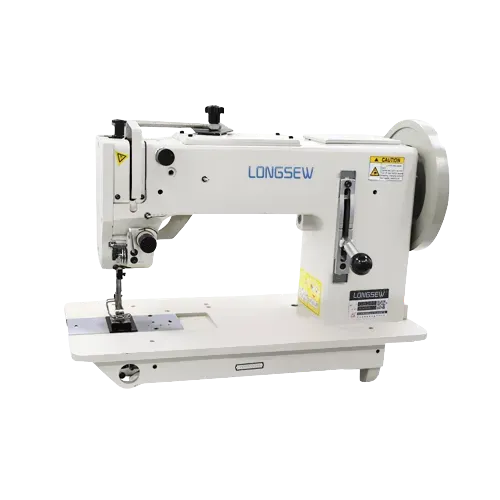Single Needle Lock Stitch Sewing Machine for Precise and Efficient Fabric Stitching Techniques
The Single Needle Lock Stitch Sewing Machine A Comprehensive Overview
The single needle lock stitch sewing machine is a fundamental tool in the world of sewing and garment manufacturing. Its design and functionality have made it indispensable for both businesses and hobbyists alike. This article aims to explore the working principles, advantages, applications, and maintenance tips for this remarkable sewing machine.
Working Principles
At the heart of the single needle lock stitch sewing machine is its simple yet effective mechanism. It operates using a single needle that moves up and down, penetrates the fabric, and creates a stitch by locking the upper thread with the lower thread. The machine utilizes a bobbin case beneath the needle plate where the lower thread is stored. As the needle pierces the fabric, it loops the upper thread around the lower thread, forming a secure lock stitch. This type of stitch is identical on both sides, providing a clean and professional appearance.
Advantages
One of the primary advantages of the single needle lock stitch machine is its ease of use. Its straightforward design minimizes the learning curve for beginners while accommodating the speed and precision demanded by experienced sewists. This machine is also known for its versatility; it can sew through a range of fabrics, from lightweight silks to heavy denims, depending on the needle and thread used.
Moreover, the lock stitch is highly secure, making it ideal for seams that require durability and strength. This is particularly valuable in garment manufacturing, where stress points such as armholes and side seams demand reinforced stitching. Additionally, the machine is often engineered for high-speed operation, allowing for increased productivity, which is essential in industrial settings.
Applications
The single needle lock stitch sewing machine is widely used in the apparel industry, where it is instrumental in constructing garments, tailoring suits, and creating all types of clothing. Furthermore, it finds application in upholstery, leatherwork, and various craft projects, making it a versatile addition to any sewing arsenal. Beyond industrial purposes, home sewing enthusiasts appreciate this machine for its reliability and the professional-quality results it delivers.
In addition to garment production, it is also commonly used in quilt-making and making home textiles like curtains and tablecloths. Its adaptability makes it a go-to solution for many sewing tasks.
single needle lock stitch sewing machine

Maintenance Tips
To ensure the longevity and optimal performance of a single needle lock stitch sewing machine, regular maintenance is crucial. Here are some essential tips
1. Keep It Clean Dust and lint can accumulate in the bobbin area and around the needle plate. Regularly clean these areas with a soft brush or cloth to prevent malfunctions.
2. Oil the Machine Proper lubrication is vital. Use the recommended sewing machine oil and apply it to the specified points to keep the machine running smoothly.
3. Check the Needle A dull or damaged needle can cause uneven stitching or fabric snags. Regularly inspect and replace the needle as needed.
4. Thread Quality Utilizing the right type of thread for your fabric is essential. Low-quality threads can lead to breakage and poor stitch quality, impacting your sewing projects.
5. Proper Threading Ensure that the machine is threaded correctly as per the manufacturer’s instructions. Incorrect threading can lead to tension issues and skipped stitches.
Conclusion
The single needle lock stitch sewing machine is a vital instrument in the sewing industry, favored for its versatility and reliability. Whether you are a professional tailor or a home sewing enthusiast, understanding how to operate and maintain this machine can greatly enhance your sewing experience and elevate the quality of your projects. With its enduring presence in the market, it continues to shape the fabric of fashion and creativity.
-
Industrial Cylinder Arm Sewing Machine: Revolutionizing Heavy-Duty SewingNewsJul.28,2025
-
Cylinder Arm Sewing Machine: Perfect for Special Sewing ApplicationsNewsJul.28,2025
-
Cylinder Bed Sewing Machine: Essential for Sewing Complex MaterialsNewsJul.28,2025
-
Heavy Duty Sewing Machine: The Essential Tool for Industrial ApplicationsNewsJul.28,2025
-
Computerized Pattern Sewing Machine: Revolutionizing Precision StitchingNewsJul.28,2025
-
Heavy Duty Industrial Sewing Machine: Power Meets PrecisionNewsJul.28,2025
-
Leather Sewing Machine: The Industrial Standard for Tough MaterialsNewsJul.18,2025





























